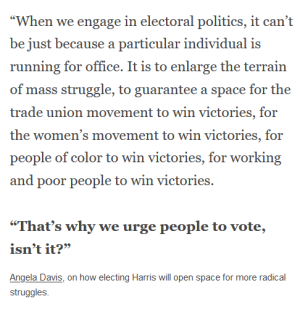[h2]Still twice as likely to be unemployed[/h2]
At the 1963 March on Washington for Jobs and Freedom, Walter Reuther, president of the United Automobile Workers of America, proclaimed that black liberation could not be fully secured without a jobs program to achieve full employment:
We will not solve education or housing or public accommodations as long as millions of Americans, Negroes, are treated as second-class economic citizens and denied jobs. And as one American I take the position, if we can have full employment and full production for the negative ends of war then why can’t we have a job for every American in the pursuit of peace?
Reuther and other march organizers believed that the United States had the wealth to provide a job to everyone who wanted to work, but lacked sufficient political will to do so. They launched the march in part to build that political will. It is shocking how relevant their complaint is today. Recent research shows that economic growth over the last three-and-a-half decades has been more than sufficient to raise living standards for all Americans, but that policies channeled the rewards of economic growth to the top. Among those policies is federal monetary policy that rather than keeping unemployment low, has focused on keeping inflation extremely low, which benefits owners of capital wealth, not workers (Mishel et al. 2012).
Over the last half century, black Americans have always suffered more from high unemployment. In 1963, the unemployment rate was 5.0 percent for whites but 10.9 percent, or 2.2 times the white rate, for blacks.
5 The ratio of the black unemployment rate to the white unemployment rate has changed little in the intervening decades, ranging from about 2 times to 2.5 times the white rate (
Figure C). It settled at 2.1 times in 2012 (with a black unemployment rate of 14.0 percent, compared with a 6.6 percent rate for whites).
Indeed, black America is nearly
always facing an employment situation that would be labeled a particularly severe recession if it characterized the entire labor force. From 1963 to 2012, the annual white unemployment rate averaged 5.1 percent, while the annual black unemployment rate averaged 11.6 percent (
Figure D). This was 4.9 percentage points higher than the average annual national unemployment rate during the recessions in this period—6.7 percent.
Even when the national unemployment rate has been low, the African American unemployment rate has been high. For example, in 2000, when the national unemployment rate was 4.0 percent, and the non-Hispanic white unemployment rate was 3.1 percent, the unemployment rate of non-Hispanic blacks was still 7.6 percent. Put another way, even when the economy was booming in 2000, the black unemployment rate was still higher than the average national unemployment rate during recessions.
And when the U.S. economy is in a recession (or still scarred by one), unemployment rates in the black community reach levels seen among the nation as a whole in a depression. For example, in the aftermath of the Great Recession, non-Hispanic white unemployment peaked at 8.0 percent, while the non-Hispanic black unemployment rate rose to 15.9 percent, with non-Hispanic black male unemployment peaking at 18.4 percent. The national unemployment rate averaged 13.1 percent from 1929 to 1939, and peaked at 22.9 percent in 1932 (see the Darby estimates in Margo 1993, 43).
The potential of full employment to lift the economic status of African Americans is hard to overstate. During the late 1990s, when the overall labor market was clearly tight and when black unemployment was at its lowest levels in a generation, black household income relative to white household income rose substantially—more than during any other period since the height of the civil rights movement. In short, equalizing unemployment rates of whites and minorities, and lowering the unemployment rate overall, has enormous potential for fostering economic equality among races.
Without full employment for blacks, it will be impossible for blacks to have low poverty rates. Without full employment for blacks, it will be a tremendous challenge for black children to live up to their potential in school, because parental unemployment impedes children’s educational attainment (Stevens and Schaller 2009; Kalil 2010).
And without full employment for blacks, it will be difficult for many blacks to gain access to decent housing in neighborhoods with resources. As Reuther correctly observed, jobs are the number one prerequisite to solving other social and economic problems confronting blacks.









































